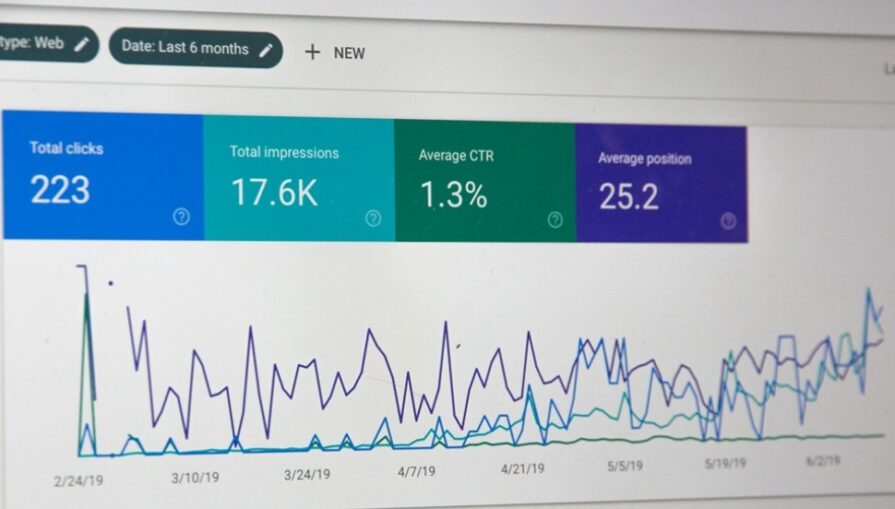Search engine optimization (SEO) is a crucial aspect of digital marketing. By evaluating your website in terms of audience engagement and technical performance, you can spot urgent issues and find opportunities to boost your ranking position.
But just assessing the overall performance of your website doesn’t tell you if certain pages or sections are having more of an impact. This is where SEO segmentation comes in, enabling a more detailed analysis.
In this post, we’ll explain why an SEO segmentation strategy is a great way to amplify your marketing efforts and show you how to use it.
How SEO segmentation works
As a marketer, you’ll already know the benefits of audience segmentation. Typically, you’ll group your customers (or potential customers) by characteristics such as age, gender, location, job, and interests. Then you can target different user segments with specific marketing efforts instead of treating the whole target market as one entity.
This technique is often used for PPC campaigns to understand how different demographics respond to paid advertising. But it’s also applicable to SEO, enabling valuable insight into your organic search performance data by splitting it into more manageable segments.
The idea is that when you create groups based on common characteristics, you can analyze each group more easily. And you can segment anything in SEO—pages, keyword lists, topics, word counts, technical elements.
For example, an ecommerce site could categorize its pages by product type or compare specific and non-specific keywords used in searches. A SaaS website could group its page types: homepage, product pages, pricing page, blog, glossary.

Why you need SEO segmentation
If you only look at the performance of your website as a whole, you won’t have detailed information about what works and what doesn’t. Take bounce rate as an example. You might have a good score across the site, but different types of pages may perform differently for the same metric.
By segmenting pages into groups, you can look at the relevant metrics for each page type or website section. Drilling down into the details helps you find areas that need improvement and figure out where you should focus your SEO efforts.
Segmentation makes it easier to spot trends and patterns, which also inform your next steps. For instance, you might notice that pages with lots of links correlate with increased organic traffic, in which case you could make the decision to prioritize link-building.
Using SEO segmentation to improve visibility has the knock-on effect of personalizing your marketing. You might compare performance across countries or regions, which shows you the areas or languages to target. You can also combine audience segmentation with SEO segmentation.
SEO is a dynamic field, with regular changes in both search engine algorithms and visitor behavior. This requires digital marketers to adapt their efforts on the fly, and SEO segmentation can give you a real advantage by making vast amounts of data easier to handle.
How to use SEO segmentation to amplify your marketing
As with any SEO strategy, you need to make sure you’re asking the right questions from the start. Begin by deciding what you want to find out, based on your specific SEO and business objectives. This will inform how you divide your data into separate segments.
There are two options for carrying out SEO segmentation. You can either use a suitable tool to run a web crawl and then segment the data, or employ a company like Accelerate agency to run a comprehensive site audit and do the segmentation and analysis on your behalf.
If you plan to do it yourself, here’s how to go about it.

Segmentation by keyword
Keyword segmentation helps you track search data across content types or by search intent. When you understand who’s searching for what—and where and why—you’ll be able to create more targeted content in the future. Which keywords have the biggest effect on performance elements like SERP ranking or bounce rate?
Various tools, such as Moz Pro and Ahrefs, can help you segment your list of keywords into relevant subgroups based on keyword length or context. With segmentation, you can easily see if the rankings for certain words are rising or falling and which search terms drive the most traffic to your website.
-
Branded and non-branded
Branded and non-branded keywords perform in completely different ways when it comes to user behavior and rankings. Branded keywords rank highly and have low bounce rates (because visitors already know what they’re looking for). Non-branded keywords don’t offer so much search visibility or click potential, and their rank position is less stable. This crucial difference is why you need to treat the two types as separate groups.
-
Search volume
It’s also important to group keywords based on their search volume. We know that long-tail keywords are more specific than broad keywords so they have less competition, but they also have a lower volume of searches. It’s, therefore, easier to improve rankings for these words and phrases, so you can use the relevant data to focus your efforts on them.
You might also split each group again, based on monthly searches or position—or various combinations such as “low-volume keywords between 0 and 50 monthly searches”, or “long-tail keywords in the top three positions”. Medium-volume keywords can form a separate group for extensive websites.
-
Context
Segmentation based on context involves grouping keywords according to what your target audience is searching for, and how they’re doing it. You might split keywords into mobile and desktop searches, find out which group performs best, and optimize the website for the more relevant type. For businesses with different language versions of web pages, segment your keywords by country or language.

Segmentation by page type
Another important part of SEO segmentation is to divide your pages by purpose and content type. This will give you a better indication of which areas (sections or individual pages) are contributing to organic traffic and affecting other SEO metrics. You can spot common patterns between page types that perform well—and those that don’t.
You might run comparisons for completely different categories, such as product feature pages and landing pages. Or you could compare groups within groups, such as different classifications of category pages.
One method of segmentation for page types is to group certain URLs. For instance, you could create a category for all the URLs that contain the word “products”, or subdivide them by particular kinds of products. This would be particularly useful for ecommerce sites, as it helps marketers to target their efforts on products that need a boost.
Segmentation by content
As well as page types, you could also group by content type. For example, a blog site might be segmented by different pieces of content, such as how-to guides, product recommendations, comparison posts, and industry news roundups. Other options for content segmentation include word count, article publication date, duplication status, or number of links.
If you measure how each of the segments performs on search engines, you’ll be able to see how changes to elements like article type and backlinks are affecting a particular category. This is important for SaaS marketers in particular, where high-quality, easily-discoverable content is king. SEO segmentation should definitely form part of your SaaS marketing checklist.
You could also create segments based on content that had the highest interaction via comments, click actions, or some other activity. This is one of the ways in which SEO segmentation data helps you make smarter decisions.
Let’s say that a certain type of content is attracting and engaging a high number of visitors. You don’t need to worry too much about reducing the bounce rate for these pages—but you might decide to focus on them for internal linking.

Segmentation by traffic
You can use tools like Google Analytics and Google Search Console to segment and analyze web traffic, using criteria such as traffic sources, devices used for browsing, search queries, or user behavior on site. Combine the data with other segments and key metrics to find correlations.
For example, you can segment the traffic by search engine, and then look into your ranking position for each engine—how did this affect the amount of visitors? How do mobile devices affect your traffic? What about geographic segmentation—how do visitors from the US interact with the content, as opposed to visitors from the UK?
Behavioral segmentation helps you understand how different audience segments interact with your website, and how the various sections perform in terms of engagement and conversion rate. You can then develop relevant content that fulfills their specific needs and preferences.
Final thoughts
SEO is all about boosting online visibility, engagement, and conversions, and SEO segmentation gives you extra insights into how to achieve this goal. Whether you segment by content type, traffic source, or category of products, it’s easier to identify and prioritize the areas that need attention.
By breaking down website performance data into smaller sections, you get a better understanding of how changes to different aspects of your site—such as link-building efforts—are affecting search visibility and rankings.
When you combine the technique with other marketing strategies, such as demographic segmentation, you’ll be fully aware of your target audience’s preferences. Then, you can amplify your marketing campaigns using technical SEO and content optimization.








